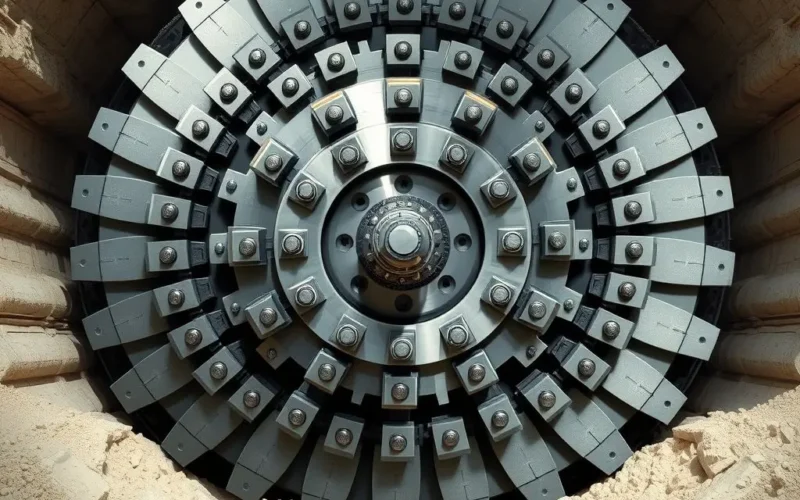Forget bridges and ferries; imagine plunging deep beneath the waves, not in a submarine, but aboard a rumbling, grinding, underground metal beast. That’s the fantastical reality behind the Channel Tunnel, or “Chunnel” – a project that didn’t just cross the English Channel, it utterly conquered it, one subterranean mile at a time.
This wasn’t just a feat of digging; it was a revolution in mega-engineering, pushing the boundaries of what was thought possible. It required colossal machinery, pinpoint precision, and unwavering determination to link Britain and mainland Europe like never before.
Want a quick, mind-blowing glimpse into this incredible project? Check out this short video showcasing the key tech:
Table of Contents
The Impossible Dream: Linking Nations Under the Sea
For centuries, the narrow stretch of water separating Britain from France has been both a natural defense and a barrier to trade and travel. The idea of a fixed link dates back to at least the early 19th century, with various ambitious, though often impractical, proposals involving tunnels or bridges.
Early attempts at drilling failed due to lack of technology and political will. It wasn’t until the late 20th century that the confluence of advanced engineering, political cooperation, and economic necessity finally made the dream a concrete (and chalk marl) reality.
The challenge was immense: boring tunnels through potentially unstable ground, dealing with immense water pressure from above, maintaining precise alignment over vast distances, and managing the logistics of one of the largest construction sites in history.
Enter the Behemoths: Tunnel Boring Machines (TBMs)
The true heroes of the Chunnel story are the Tunnel Boring Machines, often described as ‘underground factories’ or ‘mechanical moles’. These weren’t just drills; they were mobile construction sites, each capable of multiple complex tasks simultaneously.
A TBM is essentially a massive cylindrical shield with a rotating cutter head at the front. This head is studded with cutting discs and picks designed to chew through rock and soil. Immediately behind the cutter head is a chamber where the excavated material, known as ‘spoil’, is collected.
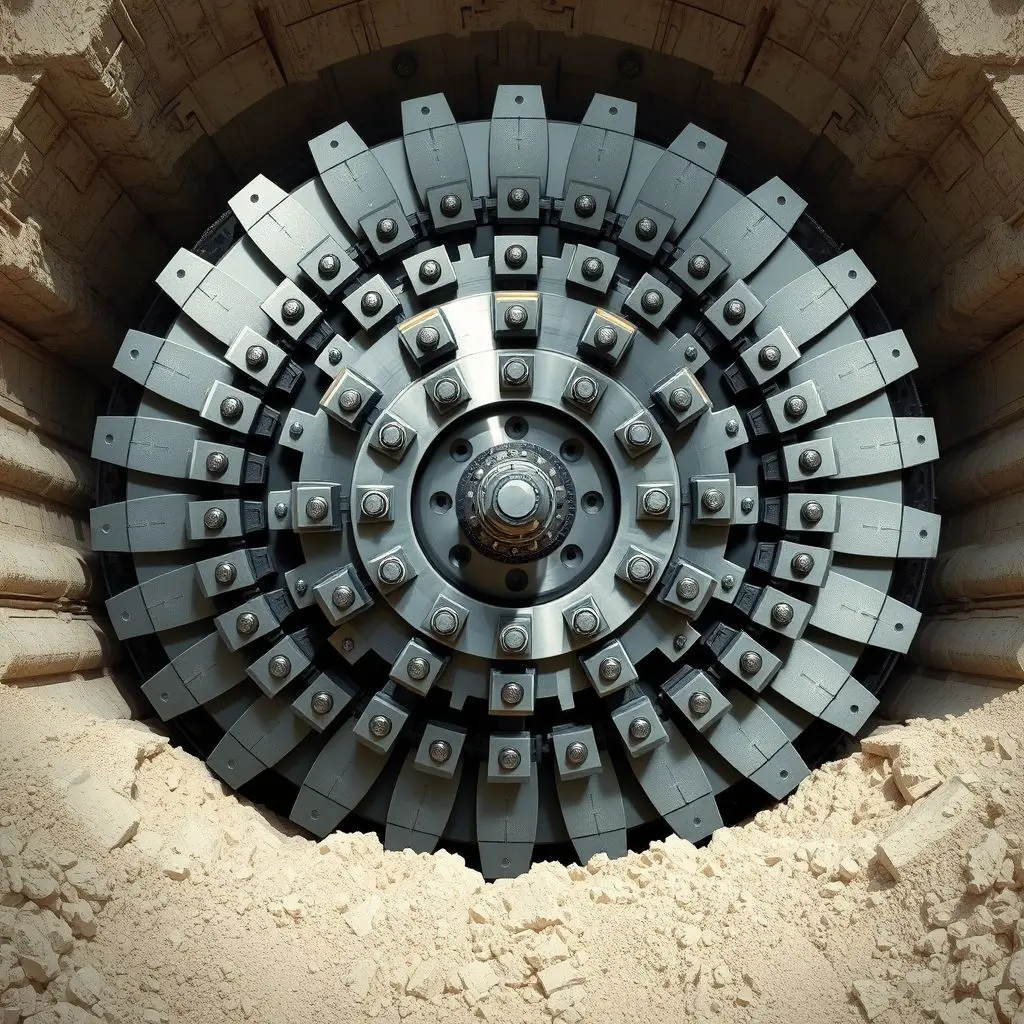
How the TBMs Worked Their Magic:
- Cutting: The cutter head rotates, breaking up the ground ahead.
- Spoil Removal: The spoil is transferred back through the machine via conveyor belts or pumped as a slurry, depending on the ground conditions and TBM type.
- Lining Installation: Behind the cutter head and shield, a sophisticated erector arm picks up precast concrete segments and meticulously assembles them into rings, forming the permanent tunnel lining. This protects against ground pressure and water ingress.
- Thrust: Once a ring of segments is complete, powerful hydraulic jacks push off this newly installed lining, propelling the entire TBM forward.
- Trailing Gear: Trailing behind the main shield was a train of backup systems – conveyors for spoil, power supplies, ventilation, grouting systems (to fill the gap behind the segments), segment delivery systems, and even crew facilities. This is why they were truly mobile factories.
Eleven TBMs were used in total – six from the UK side and five from the French side. Each was specifically designed or modified for the geological conditions they were expected to encounter. The chosen path primarily went through a layer of Lower Chalk Marl, which was relatively stable and impermeable, ideal for tunnelling, though variations still posed challenges.
The Three Tunnels and the Dual Approach
The Chunnel isn’t just one tunnel; it’s a complex of three parallel bores:
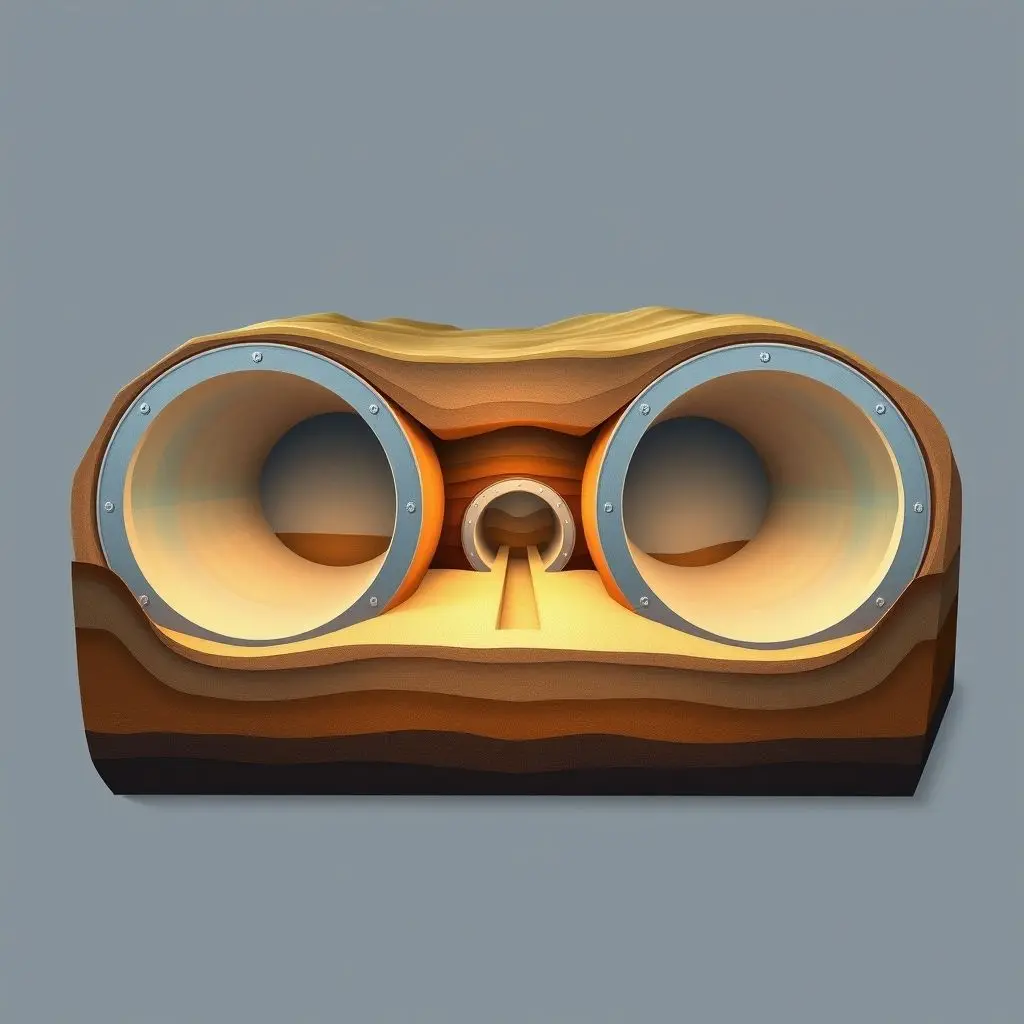
- Two Running Tunnels: These are the main tunnels, each 7.6 meters in diameter, carrying trains in opposite directions.
- One Service Tunnel: Located centrally between the two running tunnels, this smaller tunnel (4.8 meters in diameter) serves crucial functions: providing fresh air, acting as an access route for maintenance and emergency services, and connecting to the running tunnels via cross-passages every 375 meters for safety and ventilation.
The strategic decision was made to bore from both the UK and French coasts simultaneously. This significantly sped up construction but introduced a monumental surveying challenge: ensuring the TBMs from opposite ends would meet precisely in the middle of the Channel seabed.
Meeting in the Middle: A Triumph of Precision
Imagine guiding a drill from Dover and another from Calais, completely blind under the seabed, with the expectation they should meet head-on over 20 kilometers out at sea. This required an unprecedented level of surveying accuracy.
Engineers used a combination of traditional surveying techniques (triangulation from coastal points) and early, highly precise laser and satellite positioning systems. Gyroscopic navigation was also critical to maintain direction underground.
When the service tunnels finally broke through on December 1, 1990, the deviation was famously minimal – the UK and French bores met with an error of only about 36 centimeters horizontally and 8 centimeters vertically. An astonishing feat given the distance and conditions.
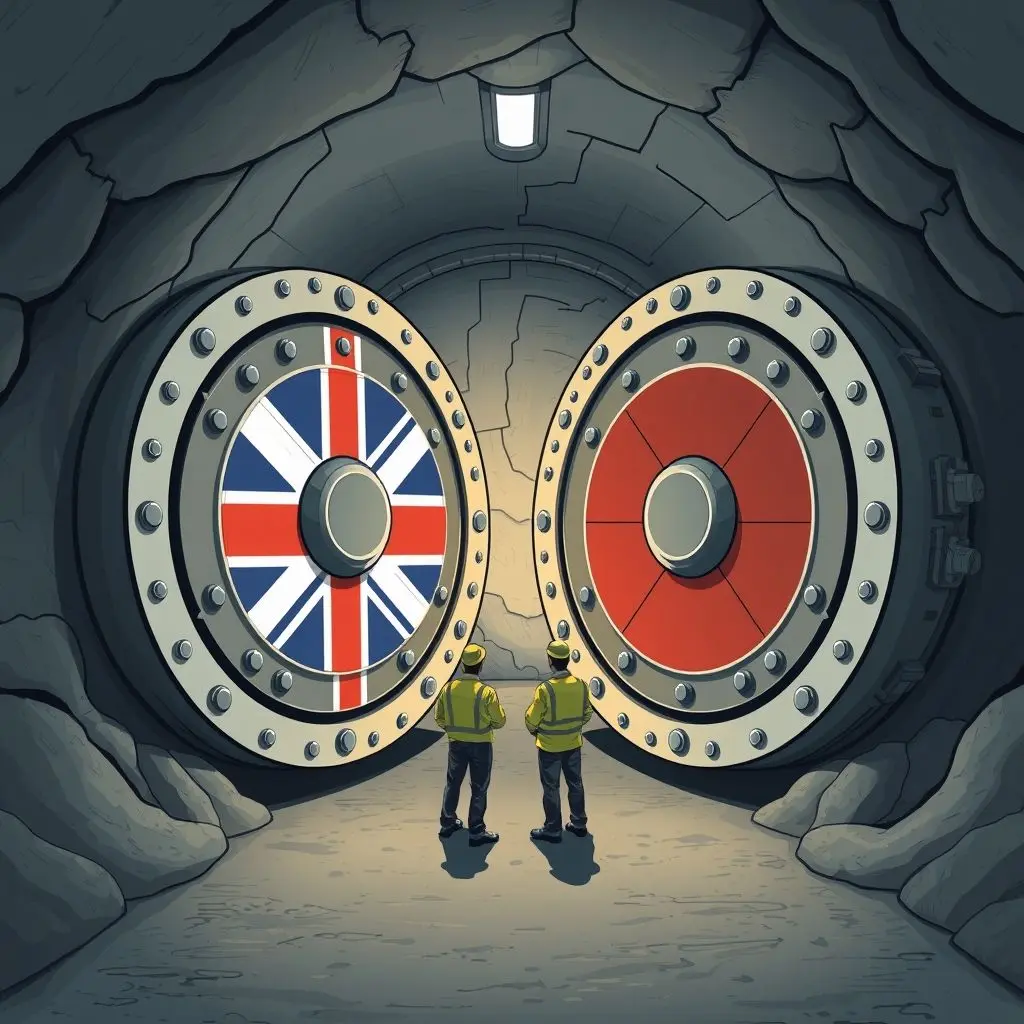
Beyond the Boring: Fitting Out the Giant Pipes
Drilling the tunnels was only part of the story. Once bored and lined, the massive task of fitting them out began. This involved:
- Laying the high-speed rail tracks.
- Installing power supply systems (overhead catenary).
- Setting up sophisticated ventilation systems to manage air quality and pressure caused by the trains.
- Implementing advanced safety systems, including fire detection, communication networks, and the crucial cross-passages to the service tunnel.
- Installing cooling systems to dissipate the heat generated by trains and air friction.
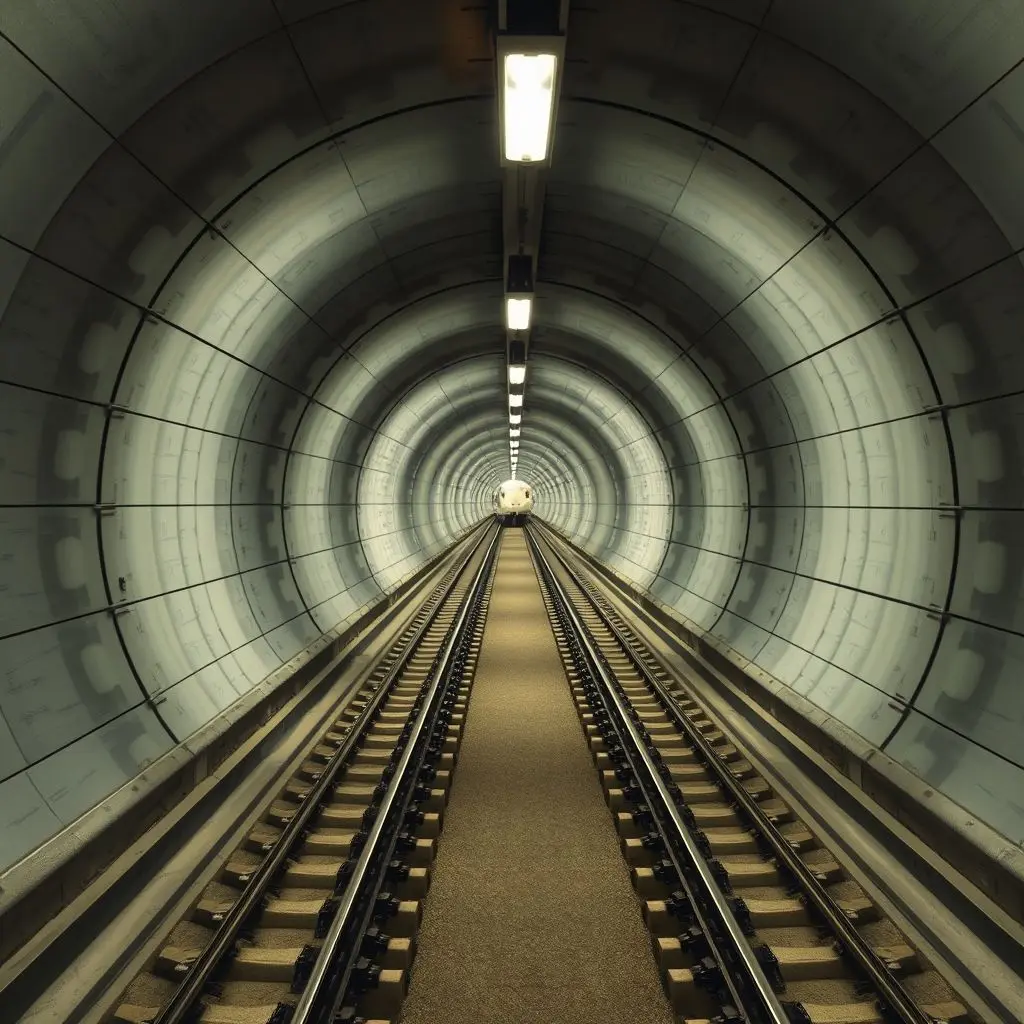
FAQs About Drilling the Chunnel
How deep is the Chunnel?
The deepest point of the Chunnel is approximately 75 meters (246 feet) below the seabed.
How long did it take to drill the tunnels?
Tunnel boring began in 1988, and the breakthrough (service tunnel meeting) occurred in late 1990. The drilling phase for all three tunnels took about 3 years, but the overall project from start of construction to opening took around 8 years (1988-1994).
What material did they drill through?
The majority of the tunnel passes through a stable, impermeable layer of Late Cretaceous period Chalk Marl. This specific geology was a major factor in making the tunnel technically feasible.
How many TBMs were used?
A total of 11 TBMs were used: 6 from the UK side (including one for the service tunnel and two for each running tunnel) and 5 from the French side (one for the service tunnel and two for each running tunnel – the UK service tunnel TBM was dismantled, the French one buried).
Was the meeting point really that accurate?
Yes, the deviation when the service tunnels met was remarkably small – only about 36 cm horizontally and 8 cm vertically, a testament to the precision surveying methods used.
A Subterranean Superpower
The Chunnel stands as a monumental achievement of civil engineering and technological innovation. It was a project that not only connected two nations physically but also pushed the limits of tunnelling technology and large-scale construction management. It demonstrated the sheer power of human ingenuity when tackling seemingly insurmountable natural barriers, leaving behind a vital link that continues to shape travel and trade between the UK and mainland Europe.
Conquering the Channel truly was a case of advancing underground, one powerful drill bit and one concrete segment at a time.
If you find these feats of mega-engineering fascinating, why not dive deeper? Explore more incredible infrastructure projects that shaped our world!
